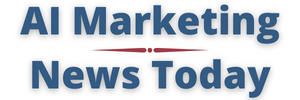OpenAI aired its first-ever Super Bowl ad this year. The 60-second spot, costing approximately $14 million, uses an artistic dot animation to position AI alongside humanity’s most transformative innovations, including the wheel, fire, and space exploration.
This resulted in a search spike for ChatGPT during the Super Bowl. The brand redesign also comes full circle, as the company recently underwent its first rebrand with a new logo and typeface.
While the ad did not use the text-to-video tool Sora in its execution, it also avoided any overt mentions of artificial general intelligence (AGI) or artificial superintelligence (ASI) – which are at the core of the company’s mission.
Speaking to The Verge, Kate Rouch, chief marketing officer at OpenAI, said: “We want the message to feel relevant to the audience that is watching the Super Bowl, which includes tens of millions of people who have no familiarity with AI.”
CEO Sam Altman took to X, describing the ad as a tribute to the history of technology and human potential.
Incidentally, on the same day, he shared his observations on AI as the world inches closer to the intelligence age. He underlined the long-term goal of making AGI a tool that improves human capability, stating that by 2035, “anyone should be able to marshal the intellectual capacity equivalent to everyone in 2025”.
Adding a more personal touch, Google’s Super Bowl ad highlighted how the Gemini chatbot helps a father balance job interviews and parenting, showcasing AI’s role in everyday problem-solving.
Meta’s Super Bowl ad made the case for Ray-Ban Meta smart glasses featuring celebrities like Chris Hemsworth, Chris Pratt, and Kris Jenner exploring an art gallery while using AI-powered glasses to get information about the artwork. The ad demonstrated the product’s capabilities.
Meta CEO Mark Zuckerberg shared that over a million Ray-Ban smart glasses were sold in 2024 and hinted at selling even more soon. During an earnings call, he called this year a key moment in the future of AI glasses.
Then, there was the Salesforce ad that put the spotlight on AI’s role in business, pitching Agentforce as the future of operations. The ad builds on Salesforce’s broader “Ask More of AI” campaign from last year, which aimed to close the AI trust gap for businesses.
With Agentforce, the company is shifting the narrative to what AI agents can actively do for users in real time.
GoDaddy kept it fun with Airo, an AI tool designed to help small businesses. Cirkul played up AI’s unpredictability, with Adam Devine hilariously ordering 100,000 water bottles by mistake. Even startups jumped in, including Ramp which featured NFL star Saquon Barkley, showing AI’s growing reach in finance.
Importance of Human Agency
The idea is to empower creatives and mankind in the intelligence age.
OpenAI and the agency Accenture Song actually used Sora to create the ad, but only in the conceptual stages. Later, human designers were brought in to fully develop it.
“This is a celebration of human creativity and an extension of human creativity,” Rouch was quoted as saying in the article, addressing the decision to not use AI-generated content in the final product. OpenAI is also holding a public talk on Wednesday, sharing insights into the ad’s creation and AI’s future.
Many AI labs and companies are at a crossroads as we enter the intelligence age. They want to ensure their advertisements deliver the importance of collaboration between AI and humans instead of AI replacing humans.
In the same light, previously, Google’s ‘Dear Sydney’ ad drew criticism for implying AI should replace human effort rather than assist it. The commercial featured a father using Gemini AI to write a fan letter to US track star Sydney McLaughlin-Leverone on behalf of his daughter. Google ultimately took down the ad.
Even Apple received backlash for its ‘Crush’ ad, which depicted a hydraulic press flattening creative tools into a sleek new iPad. The imagery struck a nerve, especially amid growing fears that AI could replace writers, artists, performers, and other creatives.
Google and Apple reportedly apologised for the way the ads were received.
Super Bowl in the AI Age
Silicon Valley giants have long used the Super Bowl as a stage to showcase their latest technologies and challenge the status quo in society. Apple set the tone in 1984 with its Ridley Scott-directed ad, positioning the Macintosh as a challenger to established players like IBM.
This year, the spotlight was on AI.
“This is potentially the most powerful tool that we’ve ever created, and it’s in your pocket right now,” said OpenAI’s Rouch on ChatGPT’s importance at the moment.


